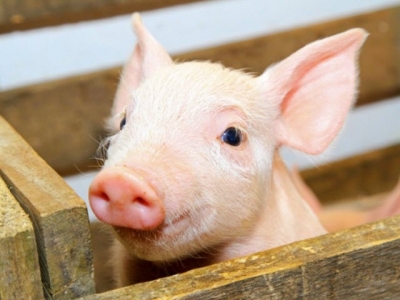Glutamine, glutamic acid and nucleotide supplementation in weanling diets piglets

Glutamine, glutamic acid and nucleotide affect carbon turnover on stomach of weaned piglets.
Performance-enhancing additives as alternative substances to antibiotics is an active research area. Some additives as glutamine, glutamate and nucleotides that are known to be involved in gastric emptying, stimulation of saliva, gastric and pancreatic juices' secretion, umami taste, trophic action in faster growing tissues, and carbon turnover-decreasing in digestive organs.
Still, more research is required to use and understand these additives aiming to improve piglet performance in the weaning period. To quantify the trophic action of the dietary additives, the stable isotopes technique has drawn attention to measure the carbon turnover (δ13C) rate, track the metabolic pathway and the composition in piglet's tissues.
Thus, this study aimed to evaluate the influence of dietary glutamine, glutamic acid and nucleotides supplementation on carbon turnover in fundic-stomach region of weaned piglets at an average age of 21 days. The diets consisted of additive-free diet – control (C); 1% glutamine (G); 1% glutamic acid (GA) and 1% nucleotides (Nu). At weaning day (day 0: baseline), 3 piglets were slaughtered to quantify the δ13C of stomach. The remaining 120 piglets were blocked by weight and sex, and randomly assigned to pens.
Three piglets per treatment were slaughtered at days 1, 2, 4, 5, 7, 9, 13, 20, 27 and 49 after weaning in order to verify the fundic-stomach isotopic composition. Samples were analysed in terms of 13C/12C ratio by mass spectrometry and converted to relative isotopic enrichment values (δ13C‰) used to plot the first order exponential curves over time.
The δ13C in stomach at the weaning day (−15.89‰) before experimental diet switching was similar to the values obtained with lactation diet (−16.14‰) fed to sows and piglets at farrowing facility. Thus, the piglet's stomach isotopic signals at weaning have reflected the diets from sows, as expected.
Moreover, the average carbon isotopic value in fundic region of 70-day-old piglets was −25.07‰, which was similar to the average value of diets provided to piglets after weaning (−27.50‰). The stomach of piglets fed GA diet had the fastest turnover (6-day lesser than C-diet), and 4% more 13C-atom substituted than C-diet at same trial period, followed by the Nu-diet that presented a half-life of 4.55-day lesser than C-diet and the same 13C-atom substitution of GA-dietAdding glutamine, glutamate and nucleotides in diets for piglets accelerated the carbon turnover in stomach during the post-weaning period.
This demonstrated also that glutamate guaranteed fastest 13C incorporation rate on fundic-stomach region and also pH-lowering. In addition, stable isotopes technique (δ13C) has proved to be an important methodology to determine the time-scales and phenotypes when piglets shift among diets.
Assoni, A. D., Amorim, A. B., Saleh, M. A. D., Tse, M. L. P., & Berto, D. A. (2017). Dietary glutamine, glutamic acid and nucleotide supplementation accelerate carbon turnover (δ 13 C) on stomach of weaned piglets. Animal Nutrition.
Related news
 Dietary net energy levels may boost feed efficiency
Dietary net energy levels may boost feed efficiency Reducing crude protein levels and monitoring dietary net energy levels may offer producers a way to improve feed efficiency in heavy pigs, say researchers.
 ‘Key challenge for the UK pork sector is litter size’
‘Key challenge for the UK pork sector is litter size’ Litter size in UK pig production is the challenge – the number of pigs weaned per sow is below the EU average, despite a 2% hike seen in 2016.
 'We were able to demonstrate that PRRSV virus can survive in DDGS and soybean meal'
'We were able to demonstrate that PRRSV virus can survive in DDGS and soybean meal' US team reveal research about the potential for feed and feed ingredients to harbor and transmit viral pathogens.